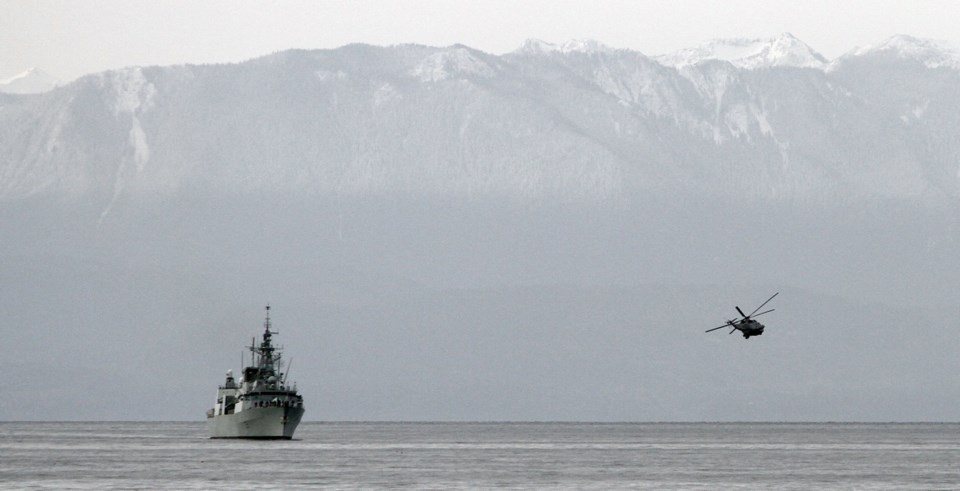Two local mayors say they would support an increased naval presence on Canada’s west coast as a way of bringing economic benefits to the regional economy.
Defence analysts are suggesting Canada move the majority of its warships from Halifax to the B.C. coast in response to the Chinese navy’s aggressive military buildup.
The U.S. government has announced it expects to put 60 per cent of its naval assets on its west coast by 2020 as part of a plan to make the 21st century “America’s Pacific Century” — a term coined by former U.S. secretary of state Hillary Clinton.
The Canadian military’s tiny fleet of warships is split on a 60-40 basis, favouring the Atlantic coast, with seven frigates and two destroyers in Halifax, compared with five frigates and one destroyer at Canadian Forces Base Esquimalt.
When submarines, maritime patrol and supply vessels are included, there are a total of 18 vessels assigned to Halifax, where approximately 5,000 military and 2,000 civilian personnel are located.
That compares with 15 vessels assigned to Esquimalt, where roughly 4,000 military and 2,000 civilian employees are stationed.
Analyst David McDonough said Ottawa should reverse the emphasis, with at least 60 per cent of the frigates and destroyers in B.C.
He also argued that once the submarine fleet is fully operational, two of the three subs in service (one will always be in the Esquimalt drydock undergoing repairs and upgrades) should be based out at Esquimalt.
“Nowadays, the threat on the East Coast is pretty mild, whereas the Pacific is a more dangerous environment,” said McDonough, a post-doctoral fellow at the University of B.C.’s political science department.
The U.S., Japan and Australia have all taken steps to expand their military muscle in response to the Chinese military’s naval buildup. Fears of a potential Pacific conflict have been exacerbated by China’s territorial disputes with the Philippines and Japan.
On Monday, Esquimalt Mayor Barb Desjardins said Esquimalt supports its troops and would back any move the Canadian government sees fit to make.
Desjardins said when she was first elected, she attended a dinner with then Defence Minister Peter MacKay where there was discussion of the merits of a greater naval presence on the West Coast. “I know it’s certainly something the Pacific fleet has been working towards,” said Desjardins.
“We as a region benefit significantly from having the navy here and we will benefit from having further navy here.”
Shellie Gudgeon, acting mayor of Victoria, said she would also support any such move.
“It certainly makes sense from a business point of view. You want to make sure you’re protected on all sides and it would certainly add to the economic base of the region, which is beneficial,” said Gudgeon.
Saanich Mayor Frank Leonard said he didn’t want to buy into the premise that Canada should build up its Pacific military defences because of China. “I didn’t know China was threatening us. It would be news to my wife. She was born in China,” he said.
But Leonard acknowledged that federal government investment at CFB Esquimalt has made a significant impact on the local economy.
“Their capital expenditures there have been quite dramatic. So what they’ve already been doing has been great for our economy and great for the region,” he said.
“I’m too old to think we have to build up our military in response to some foreign power ... but I certainly am very appreciative of the investments that have been made at CFB Esquimalt and how good it is for our region.”



